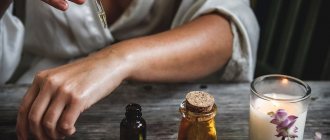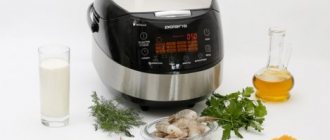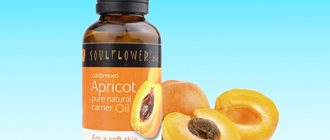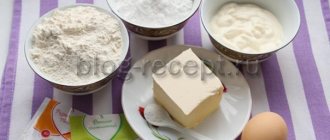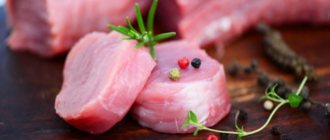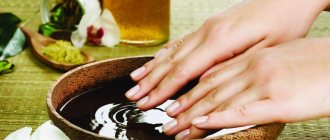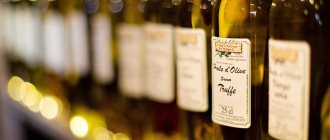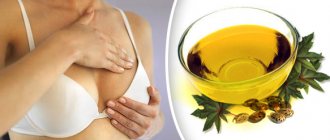What are essential oils?
Photo by unsplash.com My Beautiful Home
There are hundreds of thousands of plant , but only about 10% of them are aromatic plants that produce natural oils with a characteristic aroma. These liquid volatile compounds, produced in specialized plant cells, have various health benefits . Each of them has its own biochemical identity, which can be determined through analysis in the laboratory; such chemical composition may vary even among different varieties or specimens of the same plant.
Natural essential oils are obtained commercially from dried or fresh plants, mainly through extraction or steam distillation. However, there are ways to easily obtain precious oils in our own homes.
How to make essential oil: lavender
Aromatherapy oils can be made using hot or cold methods. If you have fresh lavender leaves, we recommend a cold infusion.
We will need:
- sterile jar with screw cap,
- sanitized dark bottle
- sterile gauze.
As for ingredients - in addition to dried lavender, choose a base (sunflower, almond, jojoba, sesame or olive oil) and vitamin E
- Place dried lavender flowers in a jar.
- Pour in enough oil to completely cover the flowers.
- Then seal the jar and place it in a well-lit, sunny location (such as a windowsill or garden) for a month, or preferably six weeks. If you can’t find a good sunny place or it’s often cloudy outside, then you can use the oven: put the jar in a water bath for 10 minutes at a temperature of 50-75°C.
- Then, filter the mixture through cheesecloth and pour into a dark bottle.
- Finally, add vitamin E, which makes natural essential oils more durable.
How to make orange essential oil
Natural oils can be made not only from flowers, but also from fruits and citrus fruits!
Citrus aromatic oils, such as orange, are a great example.
To prepare it we will need:
- jar
- oranges
- base oil with neutral odor
- First, peel the orange - it is a key component in the oil. Let's prepare it for drying by removing the remaining white, bitter streaks and then cutting it into pieces.
- Then place the peel on pastry paper and dry it in the oven, fruit and vegetable dehydrator, or near a heater (in the latter case, a few hours are enough).
- When the peel becomes dry, hard and brittle, put it in a jar and fill it with oil (for example, linseed or olive) so as to cover the orange peel.
- Leave the closed jar in the sun for a month. It is worth shaking this mixture from time to time.
- After a month, filter the oil through cheesecloth, pouring it into a dark glass container or bottle.
- Store prepared natural aromatic oils in a shaded, dry place.
Salting butter
Salting is used in the production of sweet and sour cream butter with a fat mass fraction of 82.5%, amateur sweet and sour cream butter, as well as peasant sweet butter.
Peasant cultured butter is not salted due to the negative effect of salt on its stability.
The preservative effect of salt is manifested at a 15% concentration in plasma, and the complete cessation of microflora development is at 27%, which corresponds to a salt content in oil (with a fat mass fraction of 82.5%) of 4%. When adding 4% salt to oil, an excessively salty taste appears.
The acceptable dose of salt in oil (with a fat mass fraction of 82.5%) is no more than 1.5%. When more than 1.5% salt is added to the oil, many large drops of moisture are formed, which are more difficult to disperse; some of the moisture remains free, not worked into the oil; during storage, the moisture flows off, moistens the container, and the appearance deteriorates.
The purpose of salting is to give the butter a moderately salty taste. The quality of salted sweet and sour butter when stored at positive temperatures (including room temperature 18–200C) is preserved much better than unsalted butter. This is especially true for sweet butter.
In unsalted butter at above-zero temperatures, tastes arise faster - old and stale, which turn into cheesy, moldy, rancid, etc. In salted butter, under equal storage conditions, defects of bacterial origin are inhibited.
At subzero temperatures for long-term storage, on the contrary, the shelf life of unsalted sweet cream butter is higher; salted butter develops defects, the occurrence of which is promoted by salt. This is especially true for cultured butter, where the preservative effect of table salt is reduced and its negative influence as an agent that catalyzes the chemical processes of butter spoilage increases. Lecithin dissolved in brine, when interacting with lactic acid, forms decomposition products that have an unpleasant odor.
It is economically beneficial for factories to produce salted butter, since the added salt solids allow saving milk fat, reducing the specific consumption of milk and accordingly increasing production volume.
However, the volume of salted butter production is generally regulated by consumer demand. Therefore, it is necessary to produce salted butter in agreement with the customer.
For salting, salt is used, which must meet the requirements of the current GOST for “Extra” table salt, with crystals up to 0.5–0.8 mm in size. The color of the salt should be white, and the taste of the 5% salt solution should be clean, without bitterness.
Salt must contain at least 99% NACl, moisture - no more than 0.5%; impurities – 0.5%, including insoluble – 0.05%, iron – no more than 0.005%. Impurities of magnesium salts, which cause a bitter taste, and calcium salts, which are insoluble in water and can cause salting defects that reduce the shelf life of the oil, are undesirable. Iron salts are catalysts for the oxidative processes of fat spoilage.
Before use, dry salt is pre-sifted and calcined at 120–130 0C for 3 minutes. Methods for adding salt to oil are chosen in accordance with the accepted method of oil production.
There are two methods for salting butter: dry salt and brine. When producing butter by churning cream in a batch butter maker and converting high-fat cream, salting with dry salt is used. Salting with brine of 25% concentration is used in the production of butter by churning cream in batch and continuous butter makers.
Salt is added in accordance with existing regulatory documentation in an amount of up to 1%, regardless of the type and composition of the oil.
The amount of salt (Ms) required for salting butter when producing butter by churning cream (taking into account losses) is determined by the formula:
where Mmo is the expected amount of salted butter, kg; Сн – required amount of salt in salted butter, %; K is a correction factor that takes into account the loss of salt due to the extraction of excess salty plasma of the oil during its processing,
K = Vpl/Vms
here Vpl, Vms are the mass fraction of moisture in the oil layer and the finished oil, respectively. If the mass fraction of moisture in the oil layer (Wpl) is less than or equal to the moisture content of the oil (WMC), then there will be no loss of salt as a result of squeezing moisture out of the oil grain. The correction factor (K) in this case is equal to unity.
When producing salted butter by converting high-fat cream, the required amount of salt is calculated in a similar way, with the only difference being that the correction factor (K) is excluded from the calculation formula, since salt losses are excluded.
Salting is carried out by dispersing the required amount of dry salt on the surface of hot (60–70 0C) high-fat cream in a bath until it is normalized by moisture. After this, the high-fat cream is mixed until homogeneous and samples are taken to determine the mass fraction of moisture in it.
When producing oil in batch oil producers, salting is carried out by adding dry salt or brine directly into the formation after separating the buttermilk or wash water, if used. Salt is added to the formation when its moisture content is below the specified value. This method of adding salt to the oil layer has an advantage compared to salting in the grain: the degree of salt use increases (up to 97%) and the errors in determining the required amount of salt are reduced as a result of a more accurate determination of moisture in the layer than in the oil grain, eliminating the need to determine amount of excess moisture to be removed. The salt is evenly dispersed over the surface of the oil layer. After adding salt, the tap and hatch of the oil maker's working container are closed and the container is rotated at low speed (1-2 revolutions) to mix the oil layer with salt. The oil formation processing mode is selected to ensure uniform distribution of salt in the oil monolith and a high degree of plasma dispersion, taking into account the design of the batch oil producer and the composition of the raw materials.
When producing butter by churning cream using a continuous butter maker, salting is carried out with brine using special dosing devices. In the absence of dosing devices, salted oil is not produced in continuous oil producers.
The brine is prepared from the salt used for salting, at the rate of 10–12 liters of brine for every 100 kg of oil; 1 kg of salt is dissolved in 2.8 liters of water. After dissolving the salt, the brine is pasteurized, kept for 1 hour to settle the suspensions, filtered and cooled. The temperature of the brine before salting should be 1–2 0C higher than the temperature of the oil grain.
How to make cinnamon essential oil
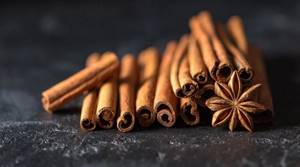
In the same way, you can make wonderful cinnamon-based essential oil.
You will need
- Approximately 12 cinnamon sticks
- One glass of olive oil (about 200 g)
- Glass jar
Try to use good quality ingredients - then the finished aromatic oil will have the best properties.
- Place the cinnamon sticks in a jar and add olive oil.
- Make sure that the cinnamon does not stick out from the liquid and, if necessary, break the sticks into several pieces.
- As in previous cases, screw the jar and leave for several weeks, shaking once a day so that the ingredients are mixed evenly.
- Then, strain the oil through cheesecloth or a small strainer to remove any cinnamon particles.
- Pour the finished homogeneous mixture into a dark bottle. The ingredients used have a long shelf life, so the finished mixture can be stored in a dry and shady place for a long time.
Recipes: what you can use to make butter
Butter can be prepared from cream, sour cream, goat, cow, and sheep milk. Here are a few classic recipes that you can add to your taste.
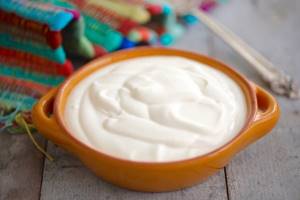
Sour cream or cream for making butter requires at least 25% fat content
Sour cream butter
You will need 1 kg of sour cream with a fat content of 25% and 5 liters of chilled water.
- Beat the butter at high speed until it separates into butter grains and buttermilk.
- Drain the buttermilk.
- Rinse the oily liquid with cooled water several times. It is convenient to use a sieve for this.
- Squeeze with your hands.
- Form a lump or bar from the butter, wrap it in cling film and store in the refrigerator.
Sour cream butter has a subtle sourness.
Butter from cream
Cream can be obtained from whole milk. For this purpose, a separator is used, two bowls of which operate on the principle of a centrifuge. To make butter, the cream will have to be pasteurized to make it biologically safe.
You will need 1 liter of fresh cream and about 5-7 liters of chilled water.
- Whip the cream in a butter churn. You can start with low power, and after 5 minutes increase the speed to maximum.
- When the cream turns white and reduces in volume, you can add salt, spices or herbs.
- Continue beating until the mass is divided into fractions.
- Place portions of butter and buttermilk in a sieve. Let the buttermilk drain, rinse the butter with chilled water, squeeze out with your hands and place on a paper towel to drain.
- After this, knead the butter, squeeze and form a lump.
- Then wrap it in film and put it in the refrigerator.
Butter made from cream has a sweetish and delicate taste.
Butter from milk
Butter is not made from milk as such; cream must first be extracted from it:
- using a separator (special device);
- manually by infusion.
On average, from 3 liters of full-fat milk you can get up to 700 ml of cream. This will be our starting raw material, from which 35–50% of the finished product is obtained. That is, from 3 liters of milk you will get about 350 grams of butter.
The step-by-step process looks like this:
- Pasteurize the milk and leave for two days to raise the cream. To speed up the process, you can use a separator.
- Beat in a butter churn until separated into fractions.
- Drain the buttermilk.
- Rinse the oil with ice water.
- Squeeze out the water.
- Mash the butter and collect it into a ball.
- Leave on a paper towel to allow any residual liquid to drain.
- Store the oil in the refrigerator.
How to make rose essential oil

Photo unsplash.com My Beautiful Home
- In the case of rose oil, you should start by collecting rose petals yourself on a dry, sunny day (so that they are not wet).
- Place the petals in a sterile and dry jar, and pour in the oil of your choice - light grapeseed oil goes very well with rose.
- Leave the closed jar on the windowsill to infuse. Shake the jar regularly.
- After about 4-6 weeks, drain the oil into a dark, glass container and place in a cool place. Homemade rose essential oil is ready.
Properties of essential oils
Let's see how the above-mentioned aromas affect us.
Lavender oil is primarily calming – it relieves stress and makes it easier to fall asleep.
The oil is also used as a moth control agent;
Lavender has antibacterial, fungicidal and antiparasitic properties. This natural essential oil can reduce inflammation (and persistent runny nose), support the immune system and stimulate the production of antibodies, regulate the sebaceous glands, accelerate the healing of wounds and scars, improve pregnancy conditions and have anti-aging effects.
Orange oil also has a calming effect; It also stimulates appetite, helps overcome gastrointestinal diseases and has a tonic and astringent effect on the skin, which is why it is used in toners, face creams and many other cosmetics. In addition, it has anti-inflammatory, antispasmodic and bactericidal properties.
In addition to antibacterial and antifungal properties, cinnamon oil also has anti-inflammatory effects. It protects our cells from free radicals, strengthens the immune system and prevents colds. In addition to fighting skin infections and acne, cinnamon oil also helps fight diabetes, rheumatism and gastritis. Its calming effect is used in aromatherapy; the smell of cinnamon relieves fatigue and stress.
In turn, aromatic rose oil is used mainly in cosmetology for the face, body and hair . Cleanses and improves skin tone, moisturizes, softens and soothes. Brightens the complexion, helps fight discoloration and regulates the acidic pH of the skin. Nourishes the scalp and adds shine and life to dry, dull hair. The oil also works well in treating hyperhidrosis (all you have to do is rub it into problem areas) and in relieving menstrual pain.
Of course, it, like the previous ones, has an aromatherapy effect; relaxes, calms and relaxes.
All of these aroma oils are good only if you are not allergic to any of the components. Therefore, before you make essential oil at home and use it, find out if you have a predisposition to a particular allergen.
Be healthy!
Flavored colored salt recipe
Chocolate masks for the face and neck. 14 delicious homemade chocolate masks
Essential oils for making macerates at home
Macerates, even from poisonous plants, are less dangerous than essential oils isolated from these plants.
Below is a list of essential oils for making macerates. All of them are distributed according to skin types. It is best to use cold-pressed oils for cosmetic purposes and do not heat them above 45°C during maceration.
Oils for all skin types:
- avocado,
- watermelon seeds, grape seeds, jojoba, sesame, poppy,
- peach pits, wheat germ, rose hips.
Oils for dry skin:
- apricot,
- walnut,
- castor,
- corn,
- sea buckthorn,
- peach,
- wheat germ, pumpkin.
Oils for oily skin:
- grape seeds,
- apricot kernels,
- almond,
- sunflower.
Essential oils for making a macerate for dehydrated skin at home:
- apricot,
- avocado,
- coconut,
- almond,
- borage (borage).
Oils for baby skin:
- apricot,
- watermelon seeds,
- jojoba,
- cocoa,
- coconut,
- sesame,
- mango seeds,
- olive,
- peach
Oils for aging and mature skin:
- amaranth;
- grape seeds,
- jojoba,
- macadamia,
- hemp,
- almond,
- sea buckthorn,
- borage (borage),
- peach pits,
- sunflower,
- wheat germ,
- camelina,
- black cumin.
Oils for therapeutic massage with high penetrating power:
- avocado,
- grape seeds,
- jojoba,
- hemp,
- hazelnut,
- wheat germ.
Essential oils for making hair macerate at home:
- for all hair types: avocado, watermelon seeds, castor, pine nut, hemp, corn, sesame, flax, olive, peach seeds, sunflower, burdock, pumpkin;
- for dry hair: jojoba, coconut;
- for oily hair: almond;
- for hair loss, to obtain a macerate with your own hands, use the following essential oils: cedar, bay, almond, milk thistle, burdock, pumpkin;
- for brittle hair: avocado, jojoba, hemp, sesame, mango, burdock, safflower;
- if you have split ends of hair: avocado, jojoba, poppy seed, carrot seed, burdock seed, safflower seed.
Watch a video about making essential oils at home:
